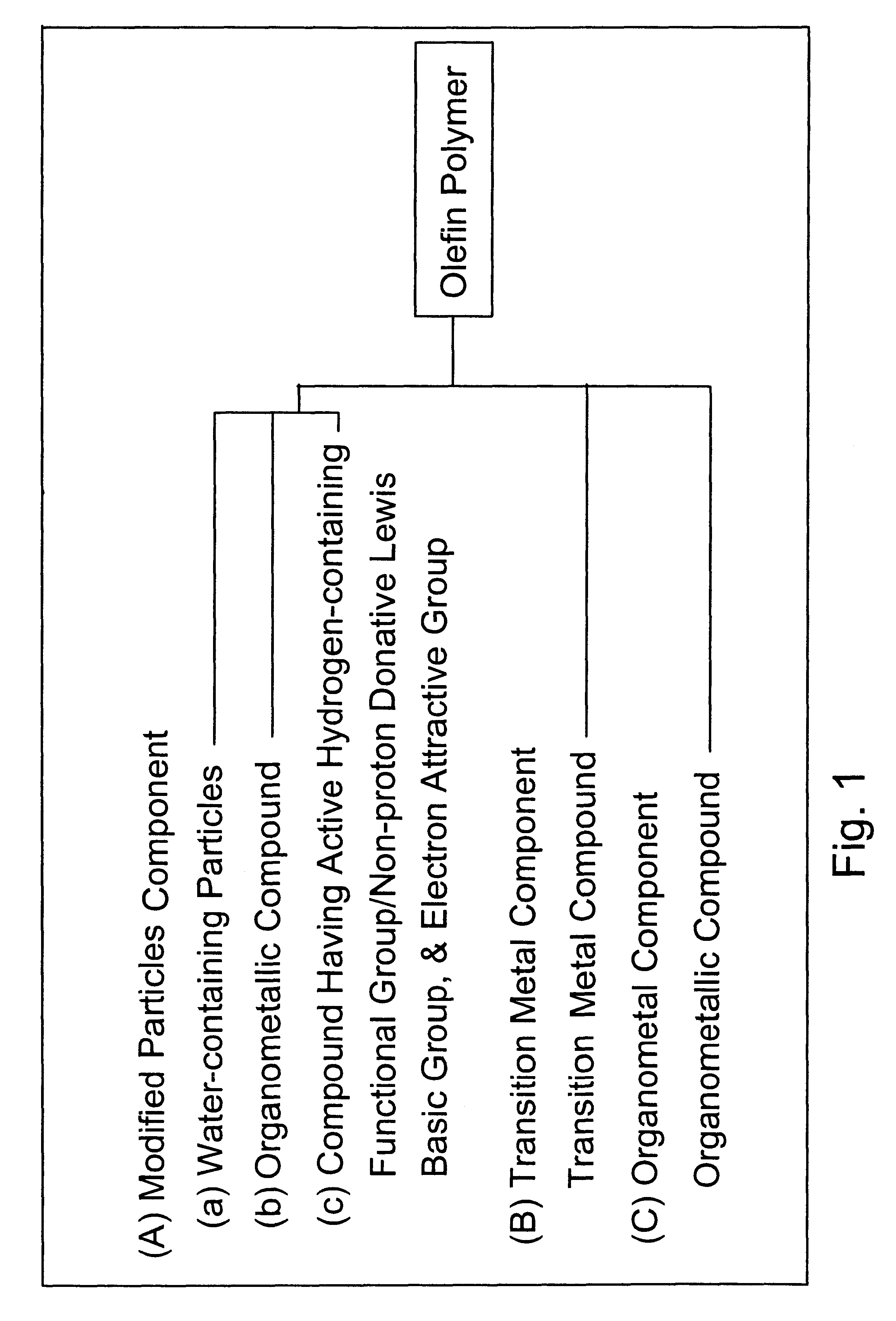Modified particles, catalyst for olefin polymerization containing the same, and method for producing olefin polymer
- Summary
- Abstract
- Description
- Claims
- Application Information
AI Technical Summary
Benefits of technology
Problems solved by technology
Method used
Image
Examples
example 1
(1) Contact Treatment of Particles (a) with Organometallic Compound (b)
A 100 ml four neck flask equipped with a stirrer, a dropping funnel and a thermometer was dried under reduced pressure and then replaced with nitrogen. 2.0 g of silica (manufactured by Cross Field Co., Ltd., ES70X, average diameter: 48.0 .mu.m, pore volume: 1.61 ml / g, specific surface area: 290 m.sup.2 / g, TV value: 8.0% by weight) was charged in the flask. Then, 50 ml of toluene was added to form a slurry, which was cooled to 5.degree. C. into an ice bath and 4.0 ml of a toluene solution of trimethylaluminum whose concentration was adjusted to 1 mmol / ml was slowly added dropwise. In that case, a generation of a gas was observed. After stirring at 5.degree. C. for 30 minutes, then at 80.degree. C. for 2 hours, the supernatant was removed by filtration and the residual solid was washed four times with 50 ml of toluene and then washed twice with 50 ml of hexane. Thereafter, the solid was dried under reduced pressur...
example 2
(1) Contact Treatment of Particles (a) with Organometallic Compound (b)
A 100 ml four neck flask equipped with a stirrer, a dropping funnel and a thermometer was dried under reduced pressure and then replaced with nitrogen. 5.0 g of silica (manufactured by Kunimine Kogyo Ltd., Trade name: Kunipia F, TV value: 10% by weight) was charged in the flask. Then, 50 ml of toluene was added to form a slurry, which was cooled to 5.degree. C. in an ice bath and 20.0 ml of a toluene solution of trimethylaluminum whose concentration was adjusted to 1 mmol / ml was slowly added dropwise. In that case, a gas was evolved. After stirring at 5.degree. C. for 30 minutes, then at 80.degree. C. for 2 hours, the supernatant was removed by filtration and the residual solid was washed four times with 50 ml of toluene and then washed twice with 50 ml of hexane. Thereafter, the solid was dried under reduced pressure to obtain 5.2 g of a flowable solid compound.
(2) Treatment with Pentafluorophenol
A 100 ml four n...
PUM
| Property | Measurement | Unit |
|---|---|---|
| Length | aaaaa | aaaaa |
| Length | aaaaa | aaaaa |
| Length | aaaaa | aaaaa |
Abstract
Description
Claims
Application Information
 Login to View More
Login to View More - R&D Engineer
- R&D Manager
- IP Professional
- Industry Leading Data Capabilities
- Powerful AI technology
- Patent DNA Extraction
Browse by: Latest US Patents, China's latest patents, Technical Efficacy Thesaurus, Application Domain, Technology Topic, Popular Technical Reports.
© 2024 PatSnap. All rights reserved.Legal|Privacy policy|Modern Slavery Act Transparency Statement|Sitemap|About US| Contact US: help@patsnap.com








